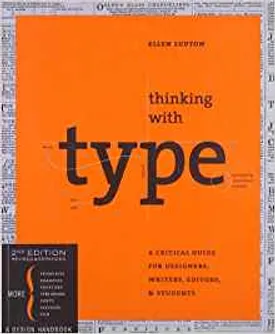Think of the books you’ve read and the pictures you’ve seen, they all convey something. Images, symbols, words all come together to tell a story, elicit emotion, and inform or persuade. That’s the mission of ‘Thinking With Type: A Critical Guide for Designers, Writers, Editors, & Students’ by Ellen Lupton. The book anatomizes the history and usage of type, words, and managing your typography to ensure you are effectively conveying your message.
In ‘Thinking with Type’, author Ellen Lupton covers a wide range of topics related to typography and it's use in conveying messages. By walking through the history, physics, and psychology of different types of typography, the book outlines how to effectively use type to communicate. This is done by going through topics such as contrast, fonts and spacing, and hierarchy.
In the History of Type chapter, Lupton walks through the evolution of type and its use throughout history. Going into how the moveable type printing press revolutionized communication by standardizing type. This chapter also goes into other discoveries in printing like the use of paper as well as calligraphy. Lupton also talks about three different classifications of type that help guide readers through a text.
The second chapter in ‘Thinking With Type’ covers the physics of type. Lupton discusses optical spacing, which is the use of negative space to group and separate elements in a design. She also goes into leading, which is the space between rows of type, as well as other related topics.
The third chapter looks at the psychology of type. Here, Lupton looks into how different design decisions affect the reader and how they interact with a text. How the size and weight of type can draw the eye to a particular part of the text are discussed. Other topics such as how contrast can be used to draw attention to certain points and how certain fonts can be used to influence emotion are also discussed.
An interesting addition to the book is the ‘Typography in Ten Minutes’ chapter. This portion of the book provides the reader with quick tips, guidelines, and strategies on using type effectively. Everything from adjusting the spacing, font choice, and formatting to create the desired effect is discussed.
The ‘Thinking with Type’ book covers a wide range of topics related to typography and its use in communicating with readers. Through discussing the history and physics of type, to breaking down psychological effects, Lupton provides the reader with a comprehensive look into the importance of type. By covering the basics and providing quick pointers, the book provides enough to get you on the right track with your typography design.

